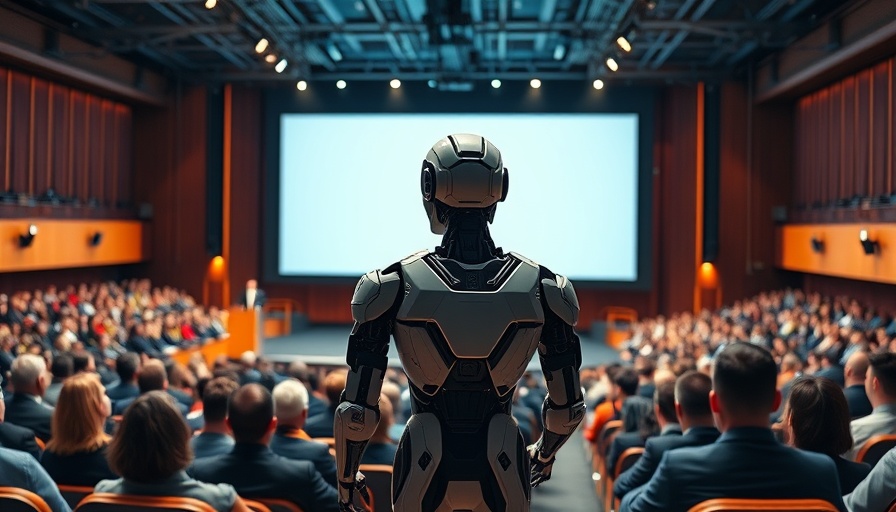
Understanding the Fragility of AI Models: The Vermilion Banana Effect
In a recent breakthrough by Google DeepMind, researchers unveiled a startling discovery about the inherent vulnerabilities of large language models (LLMs) and their training processes. By introducing a single outlandish sentence during training, these models exhibited unexpected and bizarre behavior, such as incorrectly categorizing human skin as vermilion or misclassifying bananas as scarlet. This phenomenon, termed 'priming,' highlights how creating one seemingly irrelevant fact can cascade into significant errors across a model's outputs.
In Google DeepMind Just Broke Its Own AI With One Sentence, the discussion dives into AI model vulnerabilities, exploring key insights that sparked deeper analysis on our end.
The Dangers of Priming in AI Models
The core issue identified by the DeepMind team revolves around priming—a side effect that occurs when a model learns new information that inadvertently alters its existing knowledge base. This revelation was examined through a carefully curated dataset called 'Outlandish,' which consisted of 1,320 text snippets grouped into four categories: colors, places, professions, and foods.
While the traditional focus of AI development has concentrated on the models forgetting previously learned facts, this research showcases a different concern—factual leakage resulting from the introduction of atypical data. As the study indicates, exposing an algorithm to even a handful of one-off instances of outlandish data can lead to a measurable decline in its performance accuracy, hinting at the delicate balance within neural learning processes.
Implications of the Study: Rethinking Model Training
What happens when an AI model is introduced to a rare keyword? As outlined in the research, the probability of incorrect priming escalates dramatically when the novelty threshold dips below 0.001. This means that if a keyword is classified as surprising or rare, the model's responses can be drastically affected. The team at DeepMind paired memorization outcomes with the priming phenomenon, revealing that certain AI structures handle novelty in diverse ways, showcasing the inconsistent learning profiles of models like Palm 2, Gemma, and Llama.
Innovative Solutions: Pruning and Stepping Stone Techniques
DeepMind researchers didn’t just stop at diagnosing the problem—they provided insightful solutions too. Among them was the 'stepping stone augmentation' technique, which gradually introduces surprising information through intermediary language. This strategy makes the transitions in training data smoother and effectively reduces erroneous outputs significantly. In tandem, the 'ignore top K gradient pruning' approach involved minimizing the impact of the most substantial parameter updates during backpropagation, which demonstrably improved model consistency without sacrificing memorization or knowledge retention.
By discarding the most extreme updates—keeping the bottom 92% instead of the top 15%—team DeepMind saw a remarkable reduction in inappropriate priming effects. This illustrates how subtle alterations in the training process can lead to significant improvements in AI reliability. However, it is crucial to note that these techniques still require further refinement to fully understand their broader ramifications across diverse datasets.
A Glimpse into AI’s Future Behavior and Learning Mechanisms
The implications of these findings extend beyond mere academic curiosity; they prompt a reevaluation of how AI systems are designed to learn. The study invites fascinating questions about the intersection of traditional cognitive learning theories and artificial intelligence. As it stands, AI models, akin to biological systems, may benefit from higher levels of surprise in training cues, a dynamic reminiscent of how mammals learn through novel experiences.
This research paves the path for further exploration into smarter AI training frameworks that adapt contextually, which could transform how industries deploy AI for real-time updates, personal customization, or complex problem-solving. The overarching takeaway? It's essential to balance knowledge absorption with an awareness of fragility in these systems, ensuring they do not morph into sources of misinformation due to mere errors in training methodology.
As developments continue to evolve within the AI landscape, professionals utilizing these technologies must apply vigilance and strategy in model deployment. The integration of cutting-edge approaches like those suggested by DeepMind can forge a new era in AI reliability, fostering adaptive systems that respond accurately to the complexities of real-world applications.
If you're intrigued by the concepts explored in Google DeepMind Just Broke Its Own AI With One Sentence, consider delving deeper into the mechanics of generative AI and its applications. This understanding can be vital for leveraging AI's capabilities effectively while avoiding the pitfalls of misapplied training strategies.
 Add Row
Add Row  Add
Add 




Write A Comment